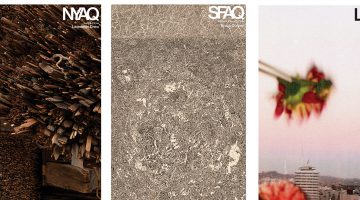An Interview with Charles Gatewood
“Charles Gatewood: 50 Years”
September 5-November 30, 2013
Opening: Thursday, September 5, 11am-7:30pm
Reception and book signing: Saturday, September 7, 3-5pm
Robert Tat Gallery
49 Geary, Suite 410
San Francisco, CA
By John Held, Jr.
John Held, Jr.: Tell me about the show at Robert Tat Gallery.
Charles Gatewood: This show is my fifty-year retrospective. I started photographing in late 1963, and here we are in 2013. So, there you go. It’s my life’s work. I’m so happy that I’m still here and that Robert’s showing the work and everybody can come and see what it’s all about.
Give me some of the highlights of the show.
Gosh, I have so many different kinds of material. I used to be a photographer for Rolling Stone, so I have pictures from those shoots including Santana, Rod Stewart – all the big rock stars of the time. I’ve also got pictures of Bob Dylan in 1966. I was just starting out, working for just a year and a half. The picture of Dylan with a cigarette- it’s a famous picture, everybody knows it. There are other pictures of mine that everyone knows, but maybe they don’t know who did it. That’s also good. They’ll say, “Oh my god, I worship that picture! I didn’t know you took that.”
A lot of my early work was documentary photojournalism. So, I had New York covered in the Sixties and Seventies – every protest, every press conference. I worked for a little newspaper called the Manhattan Tribune, and that kept me on the streets. I’d go to Harlem for them. I’d do anything they wanted. They thought I was gutsy and reliable, and I brought back good pictures every week. So, I started in New York as an editorial photojournalist and the market was booming in the early Seventies.
I know that in addition to the photojournalism, you did a book on Wall Street.
Yes, indeed. Some of my work is kind of freaky, because I go into underground scenes like Mardi Gras, or sometimes I photograph outlaw bikers, and body modification, piercing, tattooing. All kinds of alternative lifestyles. So, some people are amazed that I did the Wall Street project, because it’s a completely different body of work. But, it’s my best work, actually…some of my very best work. I worked on that essay for four years, on my own, in my own way, on my own dime. I had a loft nearby, and I thought it was a fascinating area, and I had never seen the kind of pictures I started taking. I got so excited I stayed with it.
That was shot from 1972 to 1976. I got a grant from the New York State Arts Council to publish a small edition in 1984, but I’ve always dreamed of having a nice big edition with all the best pictures and maybe some text. So, I just put that together. I got permission from the William Burroughs Archive to make a dummy with William Burroughs text about the evils of capitalism and money, and so on. I just laid out a sixty-four page book with a lot of new material. First the Burroughs Archive has to ok it, then it goes to their agent in New York, who said he’s anxious to see it, then it goes on the market. That’s one of my biggest dreams, to have an expanded book of that. I only self-published seven hundred copies [of the first edition]. So essentially, almost no one’s ever seen it. It’s some of my best work.
You mentioned body modification, tattooing and piercing photography, and that is perhaps your best-known work.
I spent a lot of time documenting the body art community. Spider Webb in New York is a famous tattoo artist, and we did three books together. He really got me into the tattooing and piercing scenes, and I’ve stayed with that. I have a huge archive of that material. Some people know me for that, but once again, that’s not all I do. I have so many different bodies of work, and that’s just one part of it.
I had the great pleasure of introducing Fakir Musafar. He’s a famous piercer, shaman and teacher. I met him early on, and I thought his work was fantastic. I introduced him to V. Vale of ReSearch in San Francisco, and Vale agreed with me. He said, “this is incredible.” So, we did a book called, “Modern Primitives,” and there was a thirty-five page interview with Fakir. That put him on the map. Before, he was in the deep underground. Then I introduced Fakir to Mark Jury, a filmmaker, and we made the film, “Dances Sacred and Profane,” and that really put him on the map. In that community, I’m one of the big guys, even though I only have one tattoo, no piercings. I’m an anthropologist. That was my academic background.
You not only put Fakir Musafar on the map, but Vale’s book, “Modern Primitives,” which had a lot of your photography in it, really broke open the whole tattooing and body modification scene to the general public.
It did. It brought it into the mainstream. I had a lot to do with that. “Modern Primitives,” has sold over 100,000 copies, which is not bad for an underground publisher in a provincial town on a really weird subject.
What else is being featured in the Robert Tat show?
It’s a survey. Some of my photojournalism. Some underground stuff. Some stuff from the gay community. Some pictures of Mardi Gras. Some Wall Street pictures. Some portraits. Some nude studies. We’re talking about fifty years of work here.
For more information visit: www.charlesgatewood.com









